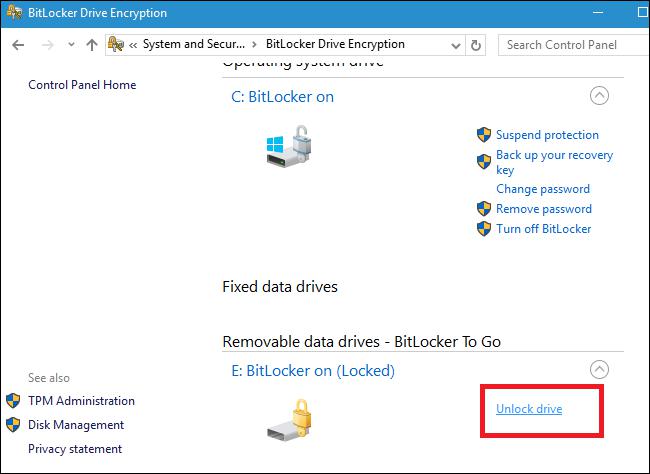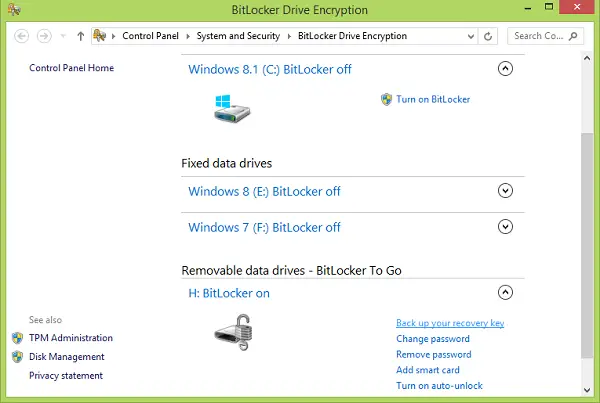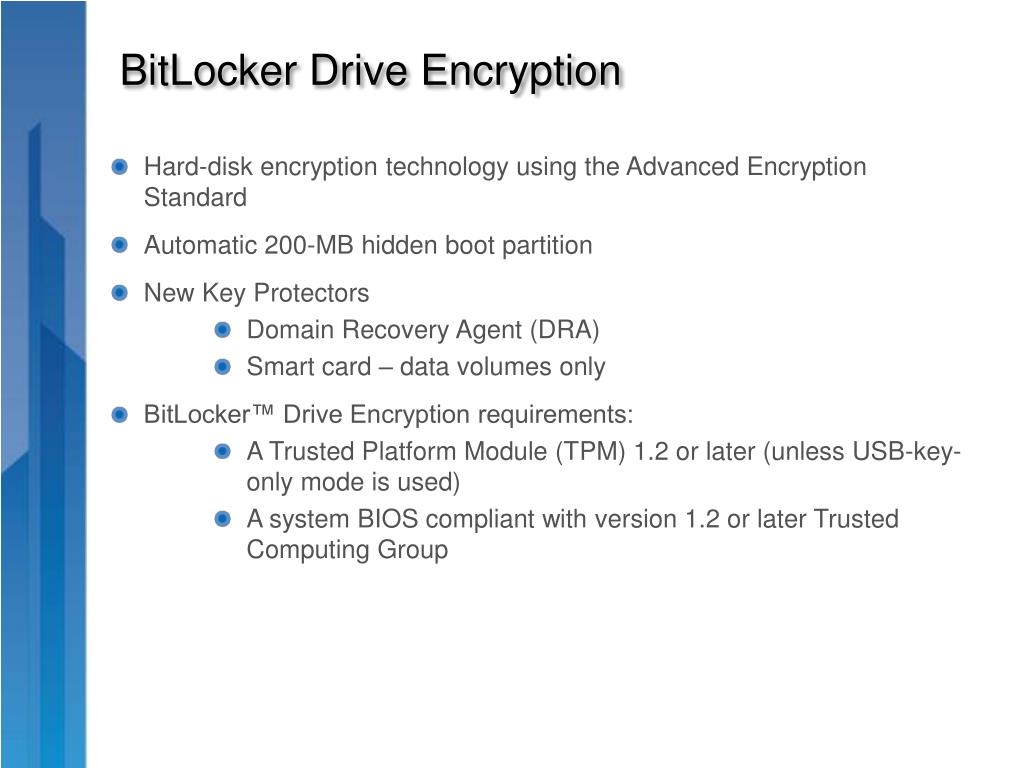

- #Bitlocker drive encryption install
- #Bitlocker drive encryption pro
- #Bitlocker drive encryption windows
To turn BitLocker on a secondary drive, use these steps:
#Bitlocker drive encryption windows
Enable BitLocker on fixed data drive on Windows 11

If you used the Microsoft account option to save the BitLocker recovery key, then, later on, you can find the keys in the device BitLocker recovery keys section of your account. However, depending on the amount of data available on the drive, BitLocker will continue to encrypt the used space in the background. Once you complete the steps, the computer will restart to enable BitLocker. (Optional) Check the “Run BitLocker system check” option. Quick note: If you intend to encrypt a drive you will use on an older version of Windows, you should choose the Compatible mode option.

Select the “Encrypt used disk space only” option. Select the option to backup the recovery key – For example, “Save to your Microsoft account.” Under the “Operating system drive” section, click the “Turn on BitLocker” option. Select the drive with the volume to encrypt.Ĭhoose the volume to enable BitLocker encryption and click the Properties button. Under the “Storage management” section, click on Advanced storage settings. To “turn on BitLocker” on a Windows 11 drive, use these steps: Enable BitLocker To Go on USB flash drive on Windows 11Įnable BitLocker encryption on Windows 11.Enable BitLocker on fixed data drive on Windows 11.Enable BitLocker encryption on Windows 11.(See also this video tutorial on the Pureinfotech YouTube channel with the instructions to complete this task.) If you use Windows 11 Home, use the device encryption instructions instead. This guide will teach you the steps to manage BitLocker on a Windows 11 drive, fixed and data drives, and USB removable storage.

If you have an older version, such as Windows 10, you can turn on BitLocker with TPM or software-based encryption, but it requires extra steps for additional authentication.
#Bitlocker drive encryption install
Windows 11 offers two types of encryption: “BitLocker” to encrypt and protect the operating system and fixed data drives and “BitLocker To Go” to encrypt removable drives that you can access from different devices.īitLocker requires a Trusted Platform Module (TPM) chip for the best experience, and since you can’t install Windows 11 on a device without TPM, it’s no longer necessary to check and configure the security feature. When turning on encryption on the drive, any data becomes scrambled using the Advanced Encryption Standard (AES) encryption algorithm to encrypt the data in the entire drive, and no one can access it without the correct password, even if you share the file with other people.
#Bitlocker drive encryption pro
On Windows 11, BitLocker is a security feature that allows you to use encryption on a drive to protect your data from unauthorized access to your documents, pictures, and any kind of data you may have on the computer.īitLocker is available on Windows 11 Pro, Enterprise, and Education, and while it’s not available for the Home edition, Windows 11 still provide device encryption in specific devices, such as Surface Pro 9, Laptop 5, and others. If you have Windows 11 Home, you have to use the “device encryption” feature (if available). BitLocker is only available on Windows 11 Pro.Click on “Turn on BitLocker” for the system drive and continue with the directions, choosing the “Encrypt used disk space only” and “New encryption mode” options.Open the “Properties” page for the drive to encrypt, and click on “Turn on BitLocker.”.To enable BitLocker on Windows 11, open Settings > Storage > Advance storage settings > Disks & volumes.


 0 kommentar(er)
0 kommentar(er)
